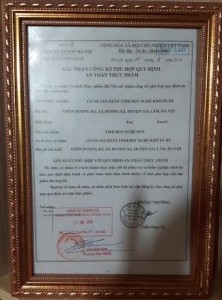step 3. Efficiency
Of the participants, 86.0% (n = 1085) were Tinder nonrepresentatives and 14.0% (n = 176) were users. All sociodemographic variables were associated with the dating apps users group. With respect to gender, for women, the distributions by group were pnonuser = 0.87 and puser = 0.13; for men, pnonuser = 0.81 and puser = 0.19; ? 2 (1) = 6.60, p = 0.010, V = 0.07. For sexual minority participants, pnonuser = 0.75 and puser = 0.25; for heterosexual participants, pnonuser = 0.89 and puser = 0.11; ? 2 (1) = , p < 0.001, V = 0.18. Age was associated with the Tinder users group, with users being the older ones (M = , SD = 2.03) and nonusers the younger (M = , SD = 2.01), t(1259) = 5.72, p < 0.001, d = 0.46.
Dining table step 1
Nonusers: users said that have never put Tinder. Users: participants claimed which have actually ever utilized Tinder. d = Cohen’s d. V = Cramer’s V Years, measured in many years. Dimensions from the line. PANAS = Positive and negative Apply at Plan. MBSRQ = Looks Testing Level of your Multidimensional Human body-Thinking Affairs Survey-Looks Balances. SSS = Short brand of the fresh new Sexuality Scale. SOI-Roentgen = Sociosexual Direction Inventory-Revised. CNAS = Consensual Nonmonogamy Ideas Scale. Sexual Spouse = self-respect since the an intimate partner. Disappointment = frustration that have sexual life. Preoccupation = preoccupation with gender.
Tinder users and nonusers showed statistically significant differences in all psychosexual and best cambodian dating sites psychological variables but not in body satisfaction [t(1259) = ?0.59, p = 0.557, d = ?0.05] and self-esteem as a sexual partner [t(1259) = 1.45, p = 0.148, d = 0.12]. Differences in both negative [t(1259) = 1.96, p = 0.050] and positive affects [t(1259) = 1.99, p = 0.047] were rather small, ds = 0.16. Tinder users presented higher dissatisfaction with sexual life [t(1259) = 3.73, p < 0.001, d = 0.30]; preoccupation with sex [t(1259) = 4.87, p < 0.001, d = 0.40]; and better attitudes to consensual nonmonogamy [t(1259) = 4.68, p < 0.001, d = 0.38]. The larger differences were in the three sociosexual dimensions [behavior, t(1259) = , p < 0.001, d = 0.83; attitudes, t(1259) = 5.30, p < 0.001, d = 0.43; and desire, t(1259) = 8.06, p < 0.001, d = 0.66], with Tinder users more oriented toward short-term relationships.
Results of the logistic regression model are shown in Table dos and were in accordance with those just reported. For this model, the explanatory capacity was small (Nagelkerke’s pseudo-R 2 = 0.10 and McFadden’s pseudo-R 2 = 0.07). Men had a higher probability of Tinder use (odds ratio, OR = 1.52, p = 0.025). Increments in age were associated with increments in the probability of use (OR = 1.25, p < 0.001). Being heterosexual reduced the probability of use (OR = 0.35, p < 0.001). To better understand the relevance of these variables, we computed the probability of Tinder use for an 18-year-old heterosexual woman and for a 26-year-old nonheterosexual man. For that woman, puser = 0.05; for that man, puser = 0.59.
Table 2
SE = standard error, OR = odds ratio, and CI = odds ratio confidence interval. Men: dummy variable where women = 0 and men = 1. Heterosexual: dummy variable where sexual minority = 0 and heterosexual = 1. Age, measured in years. Bold values correspond to statistically significant coefficients (p < 0.05).
Results of the new regression designs having Tinder explore properties in addition to their descriptives are shown inside the Dining table step three . Tinder users was making use of the software getting 4.04 months and you will minutes a week. Profiles came across an indicate off dos.59 Tinder associations off-line together with step one.32 intimate dating. Because the mediocre, the employment of the newest app led to 0.27 close matchmaking and you can 0.85 friendships.








